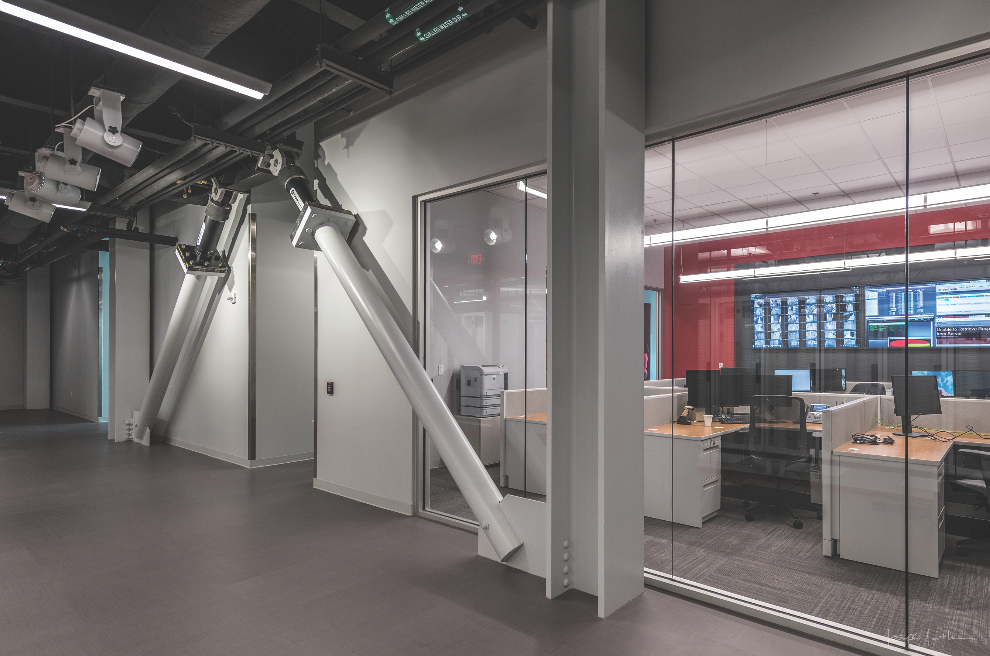Last January, Bcause LLC brought online a $65 million data center in Virginia Beach, Va., whose sole purpose is to mine Bitcoin. This is the largest cryptocurrency data center in North America. Bcause chose this location to serve Northern Virginia, the largest data center market in the U.S.
Last year, the U.S., Canada, Europe, and Asia Pacific absorbed 583.5 MW of new data center capacity. At least 400 MW more is under construction, according to JLL.
Over the past five years, data center construction has outpaced all other real estate categories, according to Site Selection Group. AEC firms active in the sector are enjoying the ride. Last year, the top five contractors in the sector put $4.4 billion worth of mission-critical facilities in place.
Ben Kaplan, SVP/GM of Turner Construction’s Global Critical Facilities Group, says demand for colocation data centers “remains quite strong,” even among cloud service providers that are building their own facilities. ("Colos" are data centers that rent server space to multiple entities.)
See also: Top 40 Data Center Architecture + AE Firms - 2018 Giants 300 rankings
See also: Top 55 Data Center Engineering + EA Firms - 2018 Giants 300 rankings
See also: Top 45 Data Center Contractors + CM Firms - 2018 Giants 300 rankings
One of Turner’s recent data centers, for colo/hybrid services provider QTS, is Project Joshua, a 445,000-sf greenfield building in Ashburn, Va., with 32 MW capacity, 180,000 sf in raised floor space, 60,000 sf of office and storage space, and reinforced walls that can withstand 125-mph winds.
One case where size really matters
Mega-facilities that exceed one million sf and 100 MW in capacity are impacting what’s getting built and where. Site Selection Group says seven of the biggest 13 centers under construction exceed a million square feet. In Huawei, China, a 4.3-million-sf data center is under construction.
Data center operator Raging Wire is building a 42-acre campus in Garland, Texas, that will house five buildings totaling one million sf and 80 MW of IT load. The first phase (201,000 sf, 16 MW), known as TX-1, was completed in June 2017. Page is providing master planning, architecture, MEP/FP design, interiors, and LEED consulting on the project.
John Major, AIA, Page’s Principal for Science & Technology, says the Raging Wire facility is unique in that its amenities are located at the center of the building. “Data centers aren’t typically workplaces,” he says. TX-1 incorporates Class A office space and hospitality-themed amenities to differentiate it from competitors and encourage prospective tenants to station dedicated teams at the facility.
Major says clients' approach to building mega–data centers seem to be shifting. While large campuses are certainly being developed, “the tranches of deployment have been scaled down dramatically to facilitate faster speed-to-market and lower first-tranche cost,” he says.
Speed-to-market and capital cost advantages have made constructing single-tenant data centers via third-party developers an “increasingly popular delivery model” for large technology users in cloud services and media offerings, note Gensler's Vaughn Lamar, LEED AP, Senior Associate and Project Architect, and Jackson Metcalf, LEED AP, Associate and Technical Designer.
Among such projects is Gensler’s work for St. Jude’s Children’s Research Hospital, Memphis, Tenn., which consolidated operations of three buildings. A new fiber ring around the campus provides faster service and better connectivity.
Controlling water use for cooling
Reliability, especially as a hedge against natural disasters, is paramount to any data center’s operations. The BBVA Technology Center, Atizapan, Mexico, provides critical IT support for the bank’s worldwide operations. Its location—on high ground at the edge of Mexico City, an active earthquake region—made it imperative that this 31,025-sm facility be designed to the highest levels of safety and redundancy.
Skidmore, Owings & Merrill, lead designer on this Tier IV data center, protected the building from seismic events through progressive collapse design strategies and a foundation isolator beneath the building, explains Kim Van Holsbeke, Associate Director in SOM’s New York office.
Data center operators are also paying close attention to the environmental impact of their facilities.
“Right now, the big trend is water,” says Robert Ioanna, PE, LEED AP, Senior Principal, Syska Hennessy Group. Newer data centers are turning to cooling systems that run on little or even no water.
For a recent 300,000-sf, 30 MW data center in Mexico, Syska Hennessy was going to go with water cooling, only to have the property owner revoke the client’s water-use privileges. Syska redesigned the mechanical and electrical systems to operate without water, using air-cooled chillers with integrated economizer cycles.
Page's Major foresees more liquefied immersion cooling, where servers get submerged in thermally conducted dielectric liquid. This method typically doesn’t require fans and allows the data center to run at hotter temperatures.
Related Stories
Data Centers | Jan 28, 2016
Top 10 markets for data center construction
JLL’s latest outlook foresees a maturation in certain metros.







